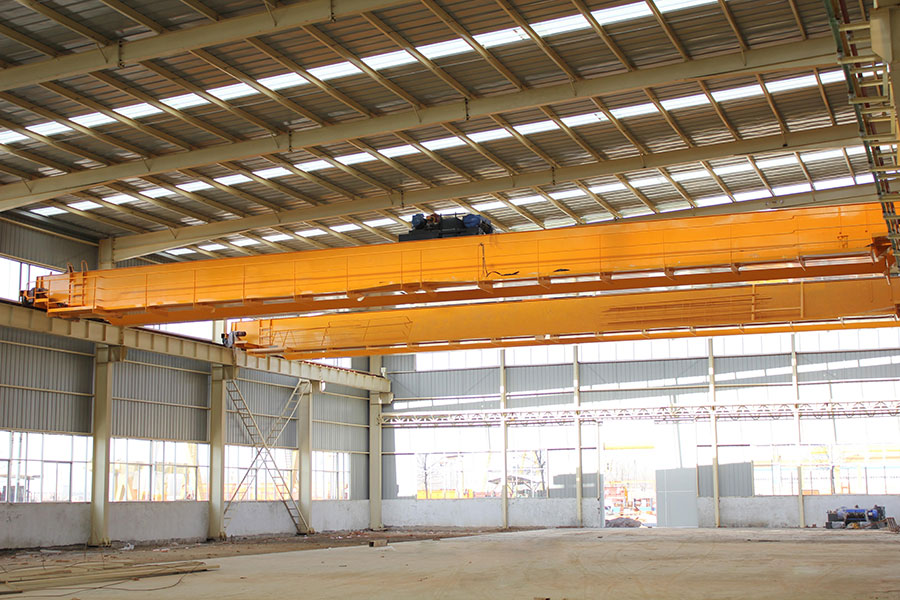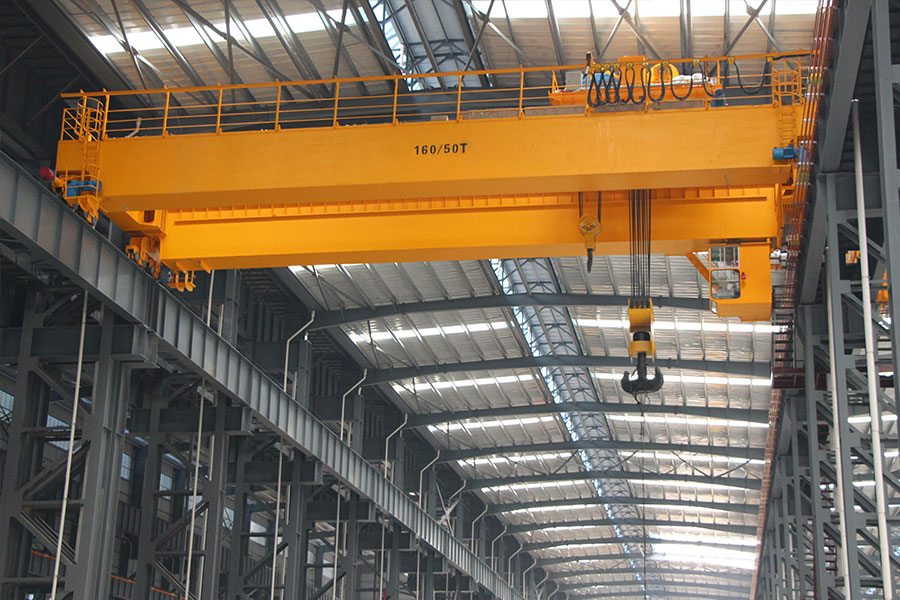Overhead Electric Overhead Traveling (EOT) cranes are indispensable equipment in industries such as steel production, shipbuilding, construction, power generation, and warehousing. These cranes handle heavy lifting, precise positioning, and efficient material transport within factory or workshop spaces. But how exactly are these sophisticated machines made? The manufacturing of an EOT crane involves a combination of structural engineering, precision fabrication, mechanical assembly, and rigorous testing. In this article, we’ll explore the comprehensive step-by-step process involved in manufacturing overhead EOT cranes.

Step 1: Design and Engineering
The journey of every EOT crane begins with detailed design and engineering work. This phase is critical because each crane must meet specific customer requirements and site conditions.
Key Activities:
-
Requirement Gathering: Engineers collect data on lifting capacity, span, lifting height, working class, and operating environment.
-
3D Modeling & Simulations: CAD software is used to design structural components and simulate load stress to ensure safety and performance.
-
Customization: EOT cranes can be single girder or double girder, top-running or underhung, and may include additional features such as anti-sway systems, variable frequency drives (VFDs), or remote control systems.
The output of this phase includes finalized engineering drawings and a bill of materials (BOM) for procurement.
Step 2: Raw Material Procurement
Once the design is finalized, the next step involves procuring high-quality raw materials. Materials are selected based on strength, durability, and compliance with industry standards.
Key Materials:
-
Steel Plates and Beams: For girders, end carriages, and structural components.
-
Electrical Components: Motors, control panels, wiring, and sensors.
-
Mechanical Parts: Hoists, wheels, brakes, gearboxes, and couplings.
All materials undergo inspection to ensure they meet quality and performance requirements before fabrication begins.

Step 3: Fabrication of Main Structure
The main structural components, such as the bridge girders and end trucks, are fabricated in this stage.
Fabrication Activities:
-
Cutting: CNC plasma or laser cutting machines are used to cut steel plates to precise dimensions.
-
Forming and Bending: Some steel parts are bent or formed to meet specific design criteria.
-
Welding: Experienced welders join steel components using MIG or submerged arc welding (SAW), depending on the thickness and function of the material.
-
Machining: Machining processes ensure accurate tolerances, especially in joints, gear housings, and wheel assemblies.
Each weld is inspected (visually and via NDT) to prevent defects that could compromise the material handling overhead crane performance.
Step 4: Assembly of Mechanical Components
This step involves the installation and fitting of essential mechanical parts that enable the crane’s operation.
Components Assembled:
-
Hoisting Mechanism: Includes the hoist motor, rope drum, wire rope, and hook block.
-
Trolley Assembly: The trolley, which moves across the bridge girder, is fitted with its own drive system and hoisting unit.
-
End Carriages and Wheels: End trucks are assembled with wheels and drive motors that allow the crane to travel along its runway.
-
Buffer and Limit Switches: Safety devices such as buffers, bumpers, and limit switches are installed to ensure safe travel limits.
Precision alignment of these components is crucial for smooth and safe operation.
Step 5: Electrical System Integration
Electrical and control systems are central to EOT crane performance. They enable smooth operation, control, and safety monitoring.
Key Tasks:
-
Control Panel Assembly: Panels are built with contactors, relays, PLCs (if required), and VFDs for speed control.
-
Wiring: Electrical wiring connects all motors, sensors, and controls.
-
Cabin or Pendant Control: Depending on the crane type, a control cabin or remote control overhead crane is installed.
-
Electrical Testing: All circuits are tested for functionality, grounding, and insulation.
Proper electrical integration allows for synchronized and fail-safe operation of the crane.
Step 6: Painting and Surface Treatment
Before final testing and delivery, all crane components undergo painting and surface treatment to prevent corrosion and enhance durability.
Surface Treatment Includes:
-
Sandblasting: Removes rust, mill scale, and contaminants.
-
Primer Application: Corrosion-resistant primer is applied.
-
Final Coating: Industrial-grade paints, often with anti-corrosive properties, are used.
Special coatings may be used if the crane is to be installed in coastal, chemical, or extreme environments.
Step 7: Pre-Assembly and Factory Load Testing
Once all parts are fabricated, assembled, and painted, the crane is pre-assembled at the manufacturing facility for load testing and performance validation.
Activities Include:
-
Alignment Checks: Verifies structural alignment, wheel parallelism, and rail clearances.
-
No-load and Load Testing: Cranes are operated under no-load and full-load conditions to verify hoisting, trolley travel, and bridge movement.
-
Deflection Measurements: Ensures that the bridge deflection under full load is within the permissible limits.
-
Functionality Test: Brake systems, limit switches, emergency stops, and anti-collision devices are tested.
Load testing is often witnessed by third-party inspectors or the end-user to certify the crane’s compliance with standards such as ISO, FEM, or CMAA.
Step 8: Disassembly and Packing
After successful testing, the crane is disassembled into transportable sections for delivery to the customer’s site.
Packing Methods:
-
Wooden Crates: For electrical and sensitive components.
-
Steel Racks: For heavy girders and structural assemblies.
-
Labeling and Documentation: All parts are labeled with installation guides, manuals, and certificates.
Proper packing ensures safe transportation without damage to critical components.
Step 9: Installation and Commissioning at Site
Once the crane arrives at the site, it is reassembled and commissioned by the overhead crane manufacturer technical team or authorized contractors.
Site Activities:
-
Erection: Structural components like girders and end trucks are assembled on the runway beam.
-
Connection of Electricals: Rewiring and configuration of control systems.
-
Alignment and Calibration: Rails, wheels, and hoist systems are aligned for optimal performance.
-
Final Testing and Handover: The crane is tested again on-site with full load, and documentation is handed over to the client.
Installation time varies based on crane complexity, site conditions, and whether single or double girder cranes are being installed.
Conclusion
The manufacturing of overhead EOT cranes is a meticulous process that combines cutting-edge engineering, precision fabrication, and thorough testing. From initial design to final commissioning, each step is critical to ensure the crane’s safety, reliability, and performance. Manufacturers must follow stringent quality assurance processes and comply with international standards to deliver equipment that can withstand the rigors of industrial environments. Whether used in heavy manufacturing, logistics, or energy production, EOT cranes play a pivotal role in enhancing operational efficiency — and understanding their manufacturing process underscores just how much engineering excellence goes into these giants of industry.
